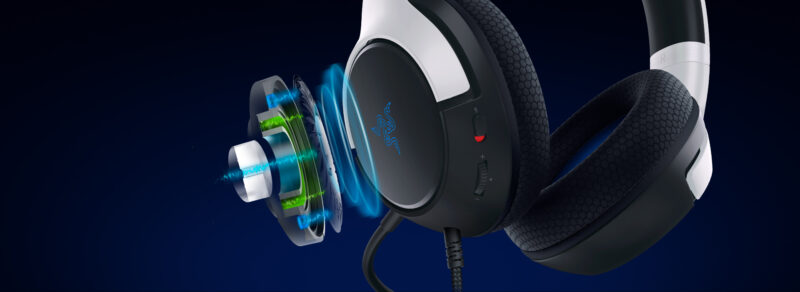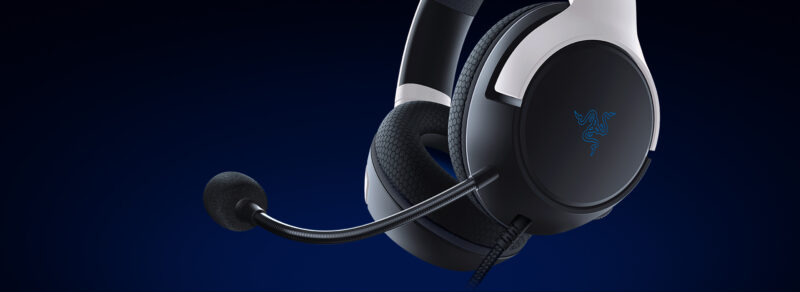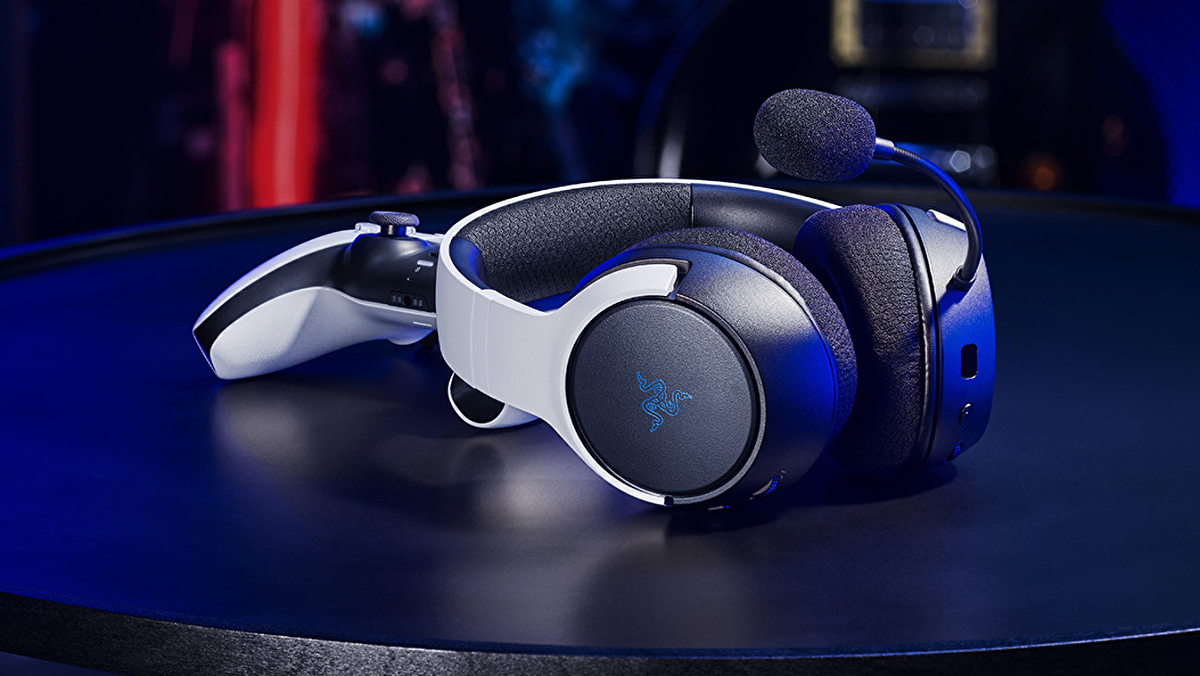Razer Kaira Pro For PS5 Review: New Dimension To Gaming
I must be completely honest that I was very skeptical. Razer Kaira Pro’s haptic feedback felt on paper like a pure gimmick and nothing worth looking for in your headphones. But I was completely wrong. Haptic feedback will from now on definitely be a feature I’m looking for in my gaming headphones.
Design and comfort
As with all Razer products, there’s a ‘premium gaming’ feel to everything from opening the box to placing the Razer Kaira Pro on my head. It boast a sleek design overall, and the black and white combo makes for a killer look in perfect harmony with any Playstation 5’s out there.
On the outside of the cups you’ll find some controls and, as everyone will be glad to hear, the RGB lit Razer logos. These are nice little touches that turns on by default, but can easily be controlled by a PC or via the Razer audio or Chroma apps. You can of course choose to turn it off to save on precious battery life.
The build is mostly plastic, except for the aluminium headband adjustments, but feels quite sturdy in hand. It’s not particularly light at 331g, so there is a bit of heft to the headset, and doesn’t feel “cheaply built” when compared to something like the Razer Barracuda X which weighed at around 250g (not that it was any less durable).
They’re very comfortable, they have nice soft cushions and are easy to wear for long sessions. They do tend to feel a bit heavy faster than a few other gaming headphones due to their weight, but there’s also a sturdiness in the design that I personally like.
Controls, features and software (app)
On the left ear cup you’ll find the power button, an infinity volume scroller, and a mute mic switch. The right ear cup has the Hypersense button (haptic feedback control), a sidetone volume scroller, and the Razer SmartSwitch, which is basically a fancy term for saying that it can switch between the 2.4 GHz USB-C Dongle and Bluetooth.
Since I’m the impatient type of person, I had trouble turning on my headphones the first few times. They only gave off small haptic pulses every time I pressed the on button, but it turned out that you need to hold the button for a few seconds for them to wake up.
I have my PC and my PS5 connected to the same monitor and have the Razer Kaira Pro headphones connected via Bluetooth to my computer and via the UCB-C dongle to the PS5. Switching quickly between the devices works fine and I have not encountered any problems. However, as I said you ‘switch’ between the two wireless frequencies, which also means that you cannot receive Bluetooth audio while using the wireless dongle on your PS5 (or anywhere else).
If you do choose to connect via Bluetooth, you will be able to configure some settings on the Kaira Pro via the Razer mobile app. It’s not much but at least it lets you customize the EQ and control the RGB.

Performance
The Kaira Pro uses Razer’s 50mm ‘TriForce Titanium’ (Nintendo Approved?) drivers to pump out audio. It doesn’t sound a lot different from its other premium headsets, so if you have used anything from Razer in the past year or so, you should find the performance almost comparable.
The headset features a subtly warm sound signature, with a balanced (if not slightly lean) bass support, emphasised mids, and smooth highs. However, I also experience that haptic feedback increases the feeling of bass in music, to the point it tends to disturb the perception of bass. In other words, it did not take long before I got tired of the haptics while listening to music and turned it off completely.
But speaking of haptics. If we ignore music listening and focus on what these headphones were made for, gaming that is, Hypersense is the most innovative feature I have experienced for gaming since VR started to get good. Basically, Hypersense is rumble for the headset, but they are a little bit smarter than normal haptics found on other devices. The Hypersense haptics are able to deliver different variations of rumble, and also provide ‘positional rumbling’. What this means is that, let’s say in a shooting game like Battlefield, if you are getting shot from the right, you will find only the right ear cup rumbling, and the intensity will vary based on how much of the bass-line has been engaged. Gimmicky to some, but I absolutely love it.
By sheer coincidence I got these headphones sent to me on the same week as Elden Ring released, and oh my, do these feel as they were made for that game. If you thought that fighting a boss in Elden Ring (or any From Software game for that matter) were intense already, wait until you have done it with these on your head. Crank up the volume and fel the big hits in a way you have never felt before.
The microphone left some to be desired in terms of sound quality, but my gaming friends had no problem hearing what I said, though they had “heard better before”.

Battery life
In terms of battery life, Razer claims around 20 hours of juice with the RGB/Hypersense haptics turned on, and around 50 hours with both of them turned off. I don’t really have no accurate means to track it but I did however run out of battery in what felt as “faster than normal” when usaing both Hypersense and RGB, so I ended up turning RGB off and only using Haptics in the games that I really felt it added that extra touch to the gameplay. With that said, I’d reckon the battery lasts pretty much around the claimed numbers.
Verdict
The Razer Kaira Pro for PS5 is a comfortable good looking gaming headset with great sound quality. It adds an extra dimension to gaming with its Hypersense Haptics and I’d recommend them to any gamer looking to evolve their gaming experience.
PROS
- Sleek looking
- Hypersense Haptics is awesome
- Good sound quality overall
CONS
- Quite expensive
- Microphone quality



